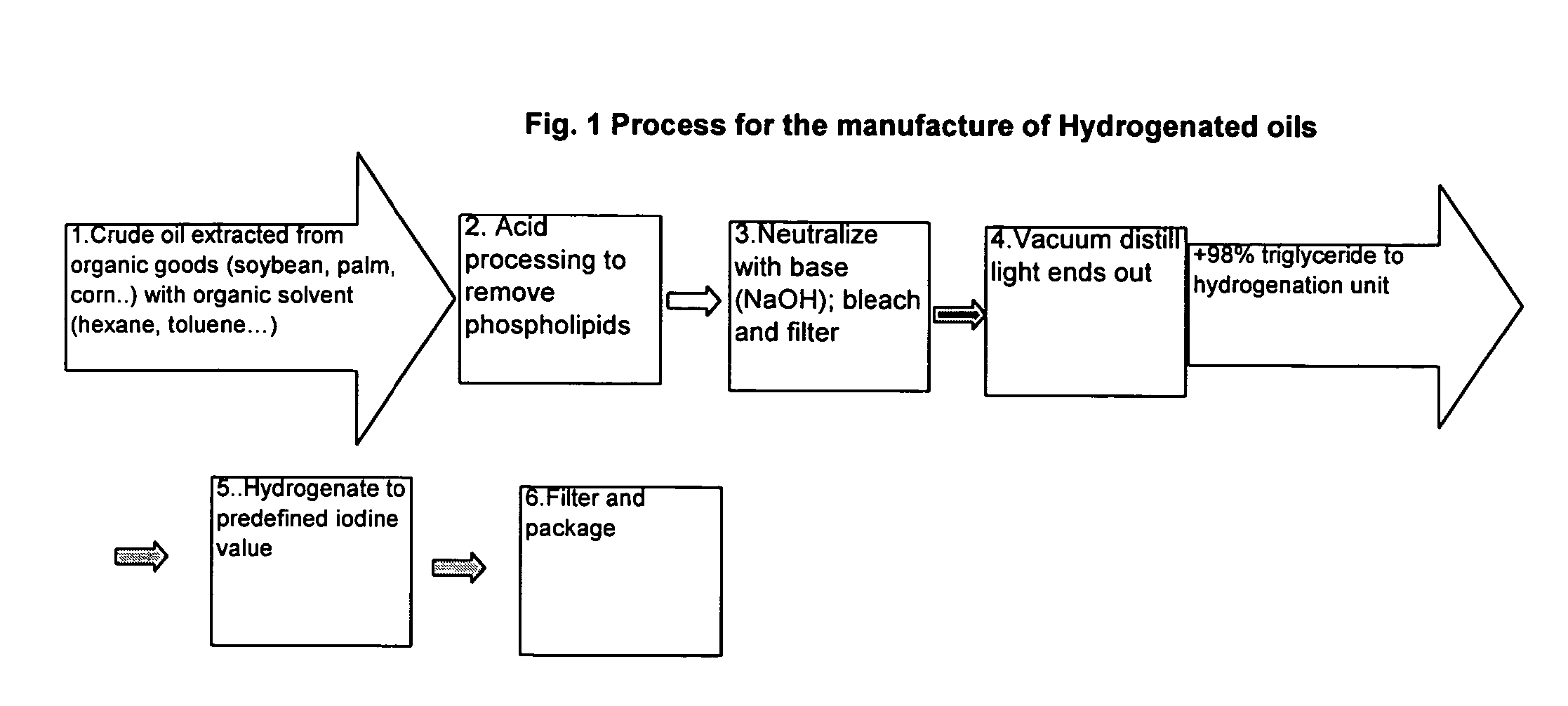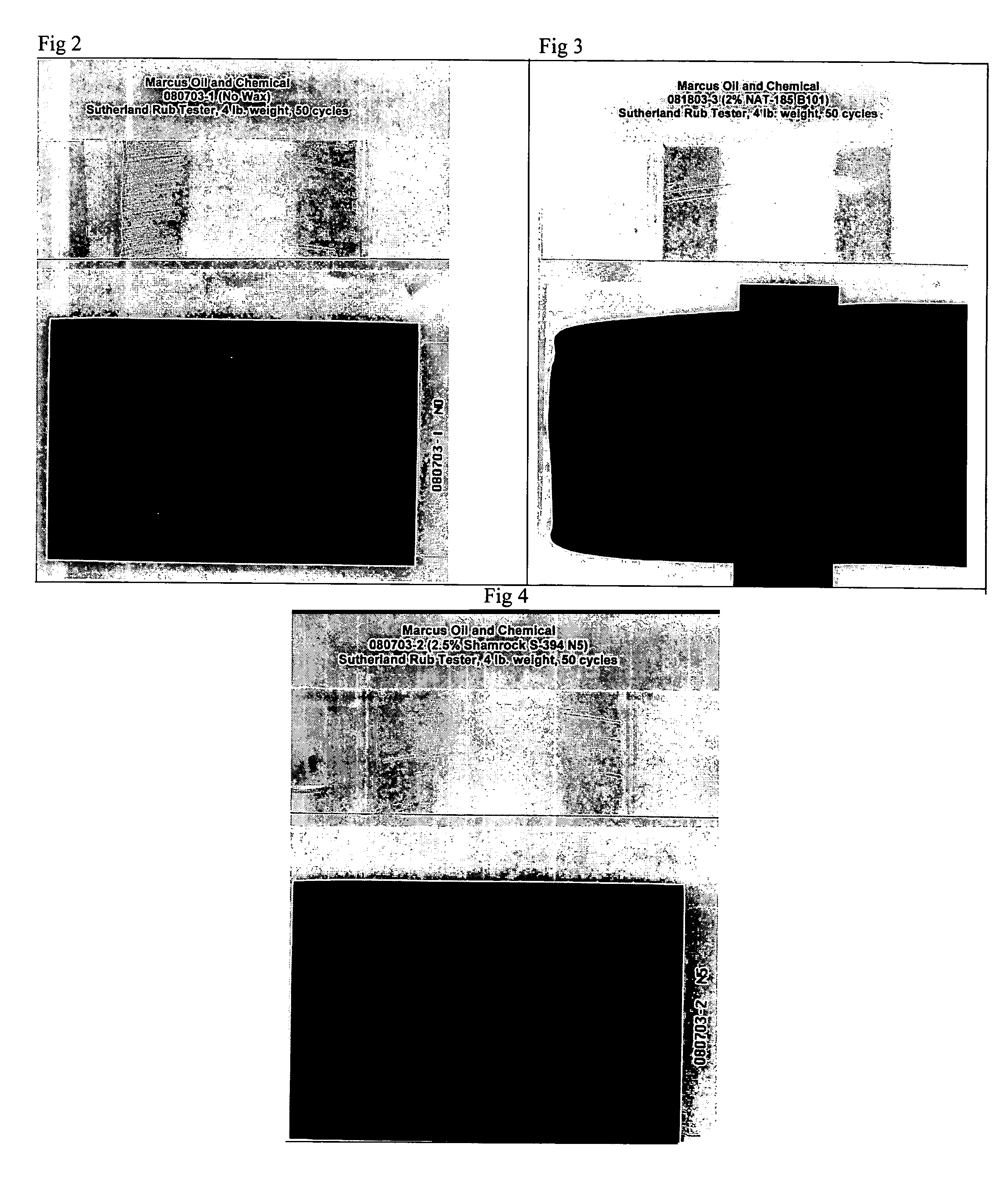Wax for reducing mar and abrasion in inks and coatings
a technology of ink and coating, applied in the field of ink composition, can solve the problems of loss of image quality expected by end users, difficult to read, and streaked lines, and achieve the effects of improving gloss and degradation properties, economic production, and increasing performance properties
- Summary
- Abstract
- Description
- Claims
- Application Information
AI Technical Summary
Benefits of technology
Problems solved by technology
Method used
Image
Examples
example 1
Properties of the Waxes
[0079]A commercially available blend of hydrogenated soybean oil and hydrogenated castor oil known as STEROTEX® K (Abitec Performance Products, Columbus Ohio) was jet milled in a MICRON-MASTER® jet mill (Custom Processing Services, Reading Pa.) to a particle size of 10 microns. The material micronized readily. This micronized material is commercially available as Marcus NAT-185 wax (Marcus Oil & Chemical, Houston, Tex.)). The NAT 185 wax is a blend of hydrogenated castor oil wax (20%) and hydrogenated soy wax (80%).
[0080]Another commercially available wax (S-368 N5T, from Shamrock Technologies) was used for comparative purposes with the wax composition of the present invention. The properties of these waxes are summarized in Table 3.
[0081]
TABLE 3Wax PropertiesProductPropertyShamrock S-368 N5T1AppearanceWhite Free Flowing PowderHegman2 7Average Micron Size12.5Specific Gravity (Gm / cm3) 0.93Melt Point ° F. / ° C. (Mettler Drop Point)207 / 97Softening Point ° F. / ° C. ...
example 2
Ink Formulations
[0082]To test the effectiveness of the wax composition of the present invention, ink formulations of a water-based flexographic ink were prepared including a commercially used wax (Shamrock S-368 N5T), the inventive wax (NAT 185) and a control preparation containing no wax additives. Starting with a master batch of a water-based commercial black ink known to contain no wax, a small quantity (100 gm) of water-based test inks (100 gr.) were made. The composition of the black ink, a commercially used ink formulation, sold by Weber and Permut, Inc. (Linden, N.J.) is summarized below (Table 4).
[0083]
TABLE 4Composition of Black Ink (Wax-free Master Batch)48%Acrylic Resin Dispersion (RHOPLEX ®, Rohm and Haas,Philadelphia, PA)14%Carbon Black1.0%Isopropyl Alcohol0.5%Defoamer (SURFYNOL ® MD-20, Air Products Corp.Allentown, PA)37%Water
[0084]A black ink was chosen because black inks are known to easily show differences in gloss, and rub resistance tests are generally easy to rea...
example 3
Evaluations of the Ink Formulations
[0090]The test ink formulations prepared in Example 2 were tested for properties such as slip, gloss, and rub resistance.
[0091]Slip is a measurement of the resistance to movement between two objects, and is generally measured by placing two objects, one of top of the other on another surface, and raising the surface, as an inclined plane, until one object slips over the other object.
[0092]Gloss is a function of the ink's ingredients, the substrate, and the smoothness of the surface of the ink film. To test for gloss, a known amount of light is angled onto the ink surface, and picked up after reflection from the ink surface. The percent of light picked up is directly related to what an observer sees as gloss.
[0093]Rub is used to measure the resistance of the printed sample to marring from the repeated rubbing of its surface. The tester generally rubs a sample of an abrasive, or a sample of the unprinted stock, against a sample of the printed stock f...
PUM
| Property | Measurement | Unit |
|---|---|---|
| weight percent | aaaaa | aaaaa |
| weight percent | aaaaa | aaaaa |
| particle size | aaaaa | aaaaa |
Abstract
Description
Claims
Application Information
 Login to View More
Login to View More - R&D
- Intellectual Property
- Life Sciences
- Materials
- Tech Scout
- Unparalleled Data Quality
- Higher Quality Content
- 60% Fewer Hallucinations
Browse by: Latest US Patents, China's latest patents, Technical Efficacy Thesaurus, Application Domain, Technology Topic, Popular Technical Reports.
© 2025 PatSnap. All rights reserved.Legal|Privacy policy|Modern Slavery Act Transparency Statement|Sitemap|About US| Contact US: help@patsnap.com


